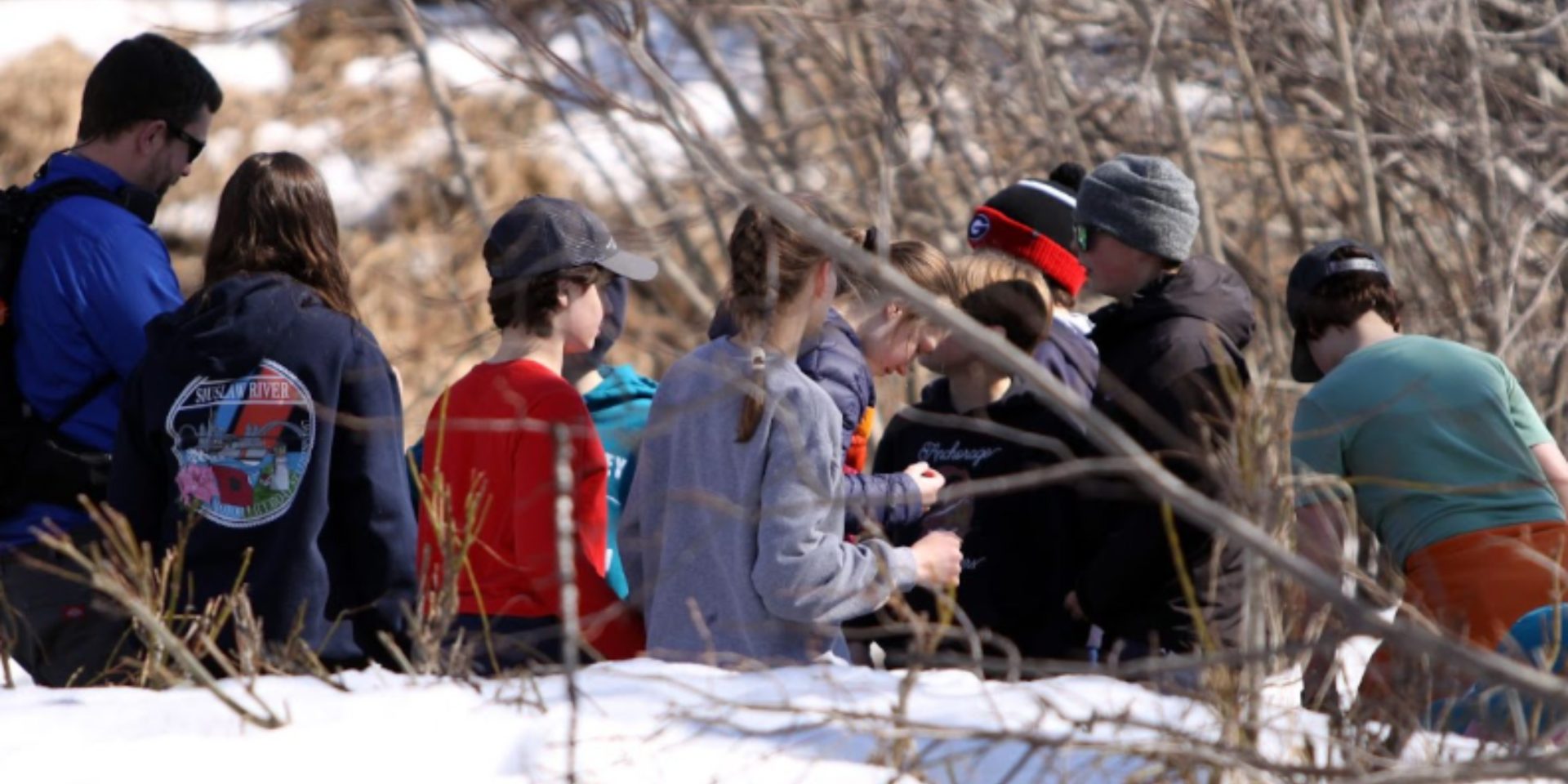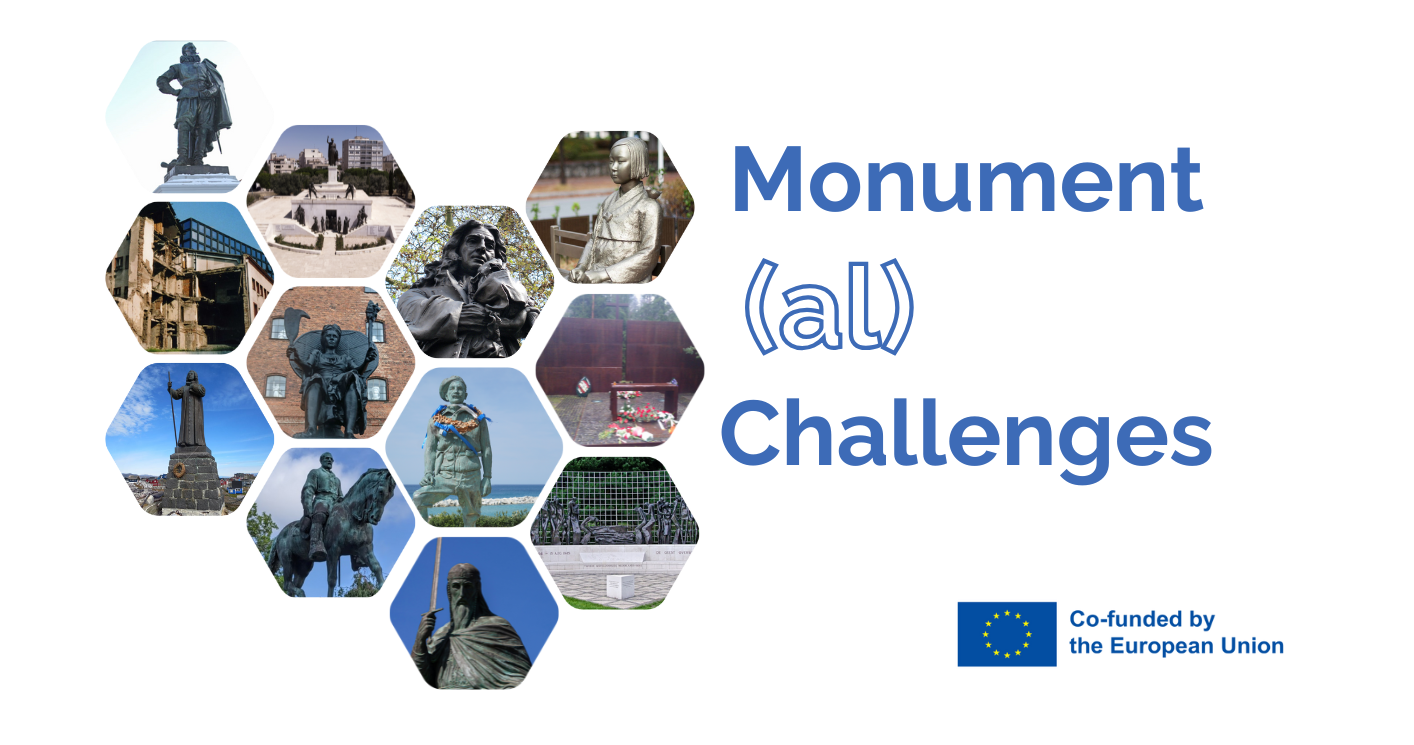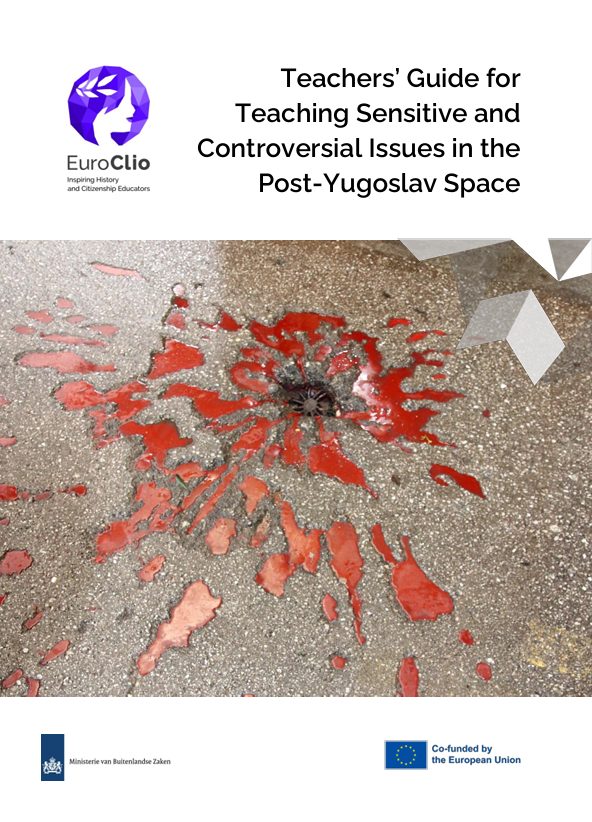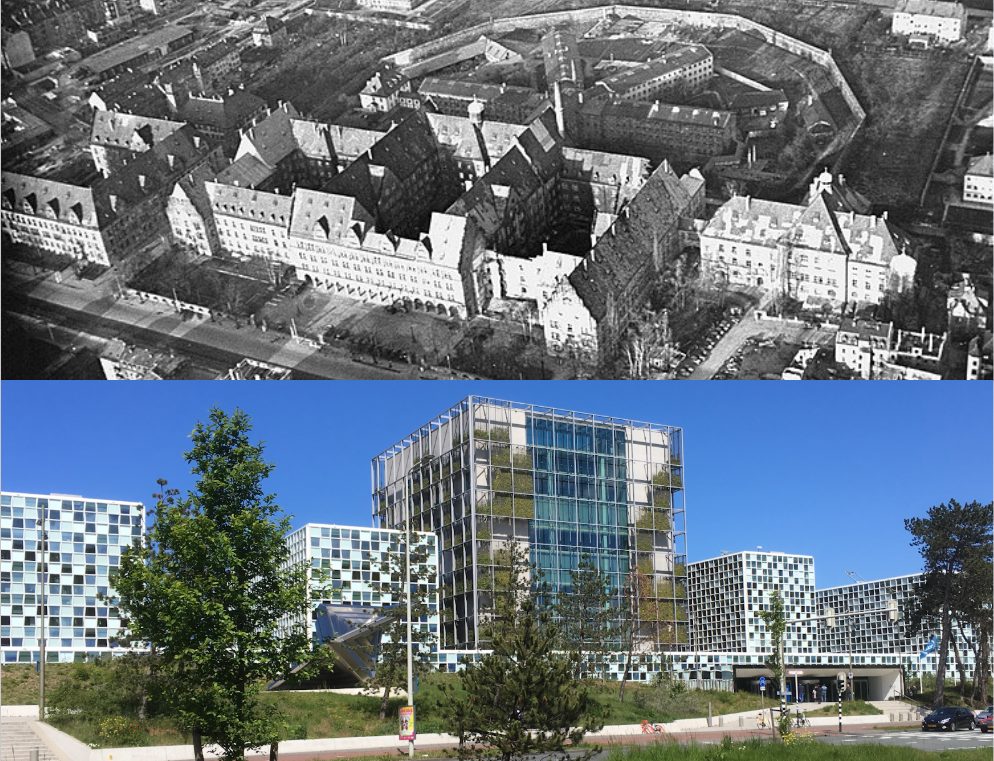This practice is based on the use of personal journals and reflections as a means of teaching the Second World War to young pupils aged 11-12, linking it with the themes of immigration, prejudice, and labelling behaviour. It starts with a virtual tour of the Anne Frank House, and especially of the Secret Annex in which Anne hid in Amsterdam, and it takes place over a series of lesson that gradually move from the persecution of Jews and the genocide, to the contemporary era. The use of journals provides, in this way, continuity to history, linking past events with present ones.
The Practice
This practice takes place over 12 lessons, moving from the teaching of Anne Frank’s life and the holocaust to contemporary issues such as prejudice and labelling behaviours.
Before diving into the topic, pupils receive (or are invited to buy) a small notebook, which becomes their personal journal. Throughout the practice, students are invited not only to express their own thoughts, feelings, and impressions in the journal, either in written form, or drawing, or with any other creative means.
The lessons do not take place directly one after the other: it might pass some time between one “journaling” and the other.
The practice is divided in two blocks, which include discussions, reflection, creative activities, and group works. It is followed by a final exhibition within the school.
The first block consists of 4 lessons and deals with the teaching of Anne Frank’s life story, which is used a case study to teach the Holocaust, as well as with the concept of ‘humanity’.
Lesson 1. The practice begins with a lesson focused on the virtual visit of the Anne Frank House, especially of the 3D reconstruction of the Secret Annex. After this tour, students are encouraged for the first time to use the journal to express their emotions and thoughts in relation to the life of Anne Frank. The aim of this lesson is to help students get a general understanding of the life of Anne Frank and of the main reasons why she was forced to spend two years in the secret annex.
Lesson 2. Then, a frontal lesson on Anne Frank’s life and on the holocaust is done, during which students who would like to are invited to share with the class parts of their journal. It is important not to force any student to share the content of the journal, this must happen on a voluntary basis. During this lesson, students are invited to reflect, out loud or on their journals, on the following questions: “what does it mean to hide?”, “How difficult can it be?”, “How long can you hide for?”.
Lesson 3. Finally, students reflect on the sensations that Anne Frank and all the people who shared her fate might have proved. They are invited to reflect on what does it mean to be angry, sad, and lonely. At the end of the lesson, students receive an envelope, a printed copy of Anne Frank’s signature, a yellow star, a copy of one of the letters, and a small piece of metal chain, to prompt thoughts about what it means to be arrested and lose one’s freedom. They are invited to attach them to their journal, and to write/draw/express their thoughts in relation to such items.
Lesson 4. The last lesson of this first block is focused on the concept of humanity. Students are encouraged to share their thoughts about Anne Frank’s life, and to reflect on what they believe means to be “human”, what is their definition of the concept of humanity. They are encouraged to think that they need to send a time capsule in space, filled with objects and with a message to show to aliens and to humans in the future what determines today’s “humanity”. Divided in small groups, they discuss the questions “who am I” and “who are we”, and in this way develop an understanding of the fact that humanity is composed of different human beings, and it is rich and diverse. At the end of the lesson, they are asked to reflect on what they understood about humanity during the day, and to express their reflections in the journal.
The second block is focused on contemporary issues. It is composed of 7 lessons, which deals with attitudes toward people with disabilities, people with different ethnicity, people with a different religion, people from the poorest parts of society, and foreigners, immigrants and refugees. The last two lessons deal with prejudice and stereotypes, and hate speech.
Lesson 5. The first lesson of the second block focused on people with disabilities. Students are asked to participate in simple games, in which they have the possibility to experience life as people with disabilities: they have to recognize object blindfolded, to paint a picture using their mouth to use the brush, etc. Afterwards, they are encouraged to discuss and reflect on how they felt when they were not able to do things as they were used to. Such reflection is not only carried out with the classroom, but also by students in their journals.
Lesson 6. Then, the classroom focuses on the ethnic groups living in the country. Divided in small groups, students prepare a short presentation on one of the many ethnic group present in their country (in the case of Bulgaria, such minorities are Roma, Jews, Russians, Armenians, Gagauz, Pomaks). Then, the class reflects on how such ethnic groups are depicted in everyday life. This reflection is carried out both out loud and on the journal. This is especially important for students who come from such groups, or for all student who might not feel comfortable in expressing their thoughts on a delicate topic like this.
At the end of this lesson, students can share special desserts from the ethnic group they studied (such as: Russian candy, sweet Armenian, Jewish unleavened bread, cakes recipe of Pomaks, etc.). As desserts need to be pre-cooked, this is possible only if the preparation of the group presentation is carried out as homework.
Lesson 7. The seventh lesson of the practice explores religious minorities and their symbols. It is carried out with the same design of the previous one: students in small group present a minority, and then reflect on how such minority is depicted in everyday life.
Lesson 8. Then, the focus moves on what it means to be rich and what it means to be poor, and on considering what real poverty means and looks like. This is carried out using a world map where areas are coloured differently according to their wealth. Every student is given one of such maps, which can be attached to the journal.
Lesson 9. In this lesson, focusing on foreigners, immigrants, and refugees, students receive a short story written in a foreign language. They have to try and read it out loud, as well as to recognize the language. Then, they have to reflect and discuss on the questions:
“what does it mean to be a stranger in a foreign land?” and “what does it mean to find yourself in an unfamiliar culture, among people who speak a different language, dress differently, eat different food…?”. They are also encouraged to use their journal to reflect on how would they feel if they were going through the same experience.
Lesson 10. The tenth lesson brings together all the lessons of the second block, and links them with Anne Frank’s life. It is focused on prejudices and labelling behaviours, and it starts with a brainstorming and discussion about words used to label others. The teacher asks students which words they use might be labelling, and writes them down on the blackboard. Then, the teachers asks which words they have heard or they know about might be labelling, and writes also those on the blackboard.
All the words are, then, categorised in “unfair”, “untrue” and “hurtful”. The categorisation is followed by a discussion. To guide the discussion, the teacher asks pupils: (1) if think that words are powerful, and why; (2) how to effectively overcome prejudices; and (3) what is the value that each one can bring to society.
After this discussion, pupils are encouraged again to use the journal and express their thoughts and emotions.
Lesson 11. Finally, a last lesson focusing on hate speech is carried out. This lessons deals with words that hurt and insult, and starts from the categorisation produced at the end of Lesson 10. It tackles, specifically, cyber bullying. To encourage students to think at the words, they use, each of them is invited to describe the others with just one, positive, word or sentence, which will then be shared out loud with the rest of the classroom. This helps not only creating a positive atmosphere in the classroom, but teaches also students that their words have an impact. As with all the other lessons, students are encouraged to write their emotions and thoughts in their journal.
After lesson 11, students journals will be filled with thoughts and emotions relating, showing their very own growth path, which led them from the understanding of the life of Anne Frank, victim of hate speech, labelling behaviours and prejudices more than half a century ago, to the development of a new awareness of the importance of words and of avoiding labelling behaviours and unfair, untrue, and hurtful terms.
Lesson 12. This understanding is, finally, shared by the classroom with the rest of the school by means of an exhibition. Flipcharts are made, showing the experiences, information and emotions gathered thanks to this growth path, and are placed in the school corridors.
Obstacles and lessons learned
Successful implementation of this type of lessons depends on the pre-training, which requires time, enthusiasm and dedication. Building a culture of acceptance tolerance, critical thinking, and self-examination requires perseverance and pursuit of pedagogical goals. In this sense, the only obstacle that a teacher could encounter is a lack of time for the development and implementation of all the lessons outlined above. For this reason, Teodora carried out the practice only with ‘her’ class, a class with which she has extra hours every week. Another possible solution is to carry out such lessons spreading them throughout the school year, or in partnership with other subject teachers, such as, perhaps, grammar and language teachers.
The effect of the practice
The use of the journal was welcomed by students, which accepted it as a challenge to be taken. Most of them kept using the journal also after the end of the project, collecting in it memories and thought about various classes. The use of the journal helped them to create an emotional connection with the topics, determining a big impact on pupils attitudes. Most of the pupils in Teodora’s class, in fact, developed a positive attitude toward diversity, stopped using labelling terms, and started to promote respect, tolerance, and the importance to get to know each other as an important pillar of social life.
Moreover, the series of lessons helped expand students’ worldview. Teodora received good feedback from parents, who shared that their children told them what we were doing in the hours that it was very interesting, different and exciting.
Teodora was also invited to the Ministry of Education in Bulgaria to share with her colleagues her work on these lessons and the results.
About the interviewee
Teodora Nikolova is senior teacher at the primary public school 33 OU “Sanct Peterburg” in Sofia. She teaches to students aged 11 to 14.
Background to the project
In the past couple of years, the topics of social justice, acceptance, and inclusion have become more and more important in Bulgarian society. In a society where refugees are viewed as a “them” sharply separated from the “us”, this practice allows to connect recent events with important historical moments in the XX century, enabling pupils to understand the context in which they live and to make informed choices in future.
In Bulgarian schools, history curricula do not envision enough time to deal with holocaust and contemporary issues. Each teacher, however, has one class that is “his/her class”, with which they have an extra hour per week. It is with this class that Teodora implements the practice.
Teodora developed and implemented her idea for the series of lessons presented in this post after a seminar dealing with the Holocaust and our attitude to the history of the 20th century.
Additional Information
Some of the lessons and of the materials were video recorded by Teodora, which posted on Facebook the results.
Written by Teodora Nikolova, 33 OU “Sanct Peterburg” in Sofia, Bulgaria on 20 .07.2018.





